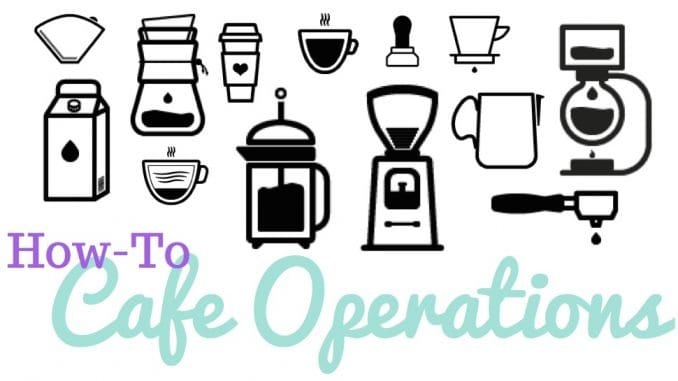
BY ASHLEY RODRIGUEZ
SPECIAL TO BARISTA MAGAZINE
In the latest Barista Magazine blog series, our online editor Ashley Rodriguez will explain ˜how to’ identify and implement different tools and strategies to help your café run as efficiently as possible.
On your initial visit to a café, there are several easy ways to evaluate how efficiently it’s operating. Most people would probably notice the ambiance, the menu options, the variety of pastries and other goods, for example. I, however, notice completely different things: How fast is the line moving?. How many people are behind the bar? How likely is someone is to order a quick drink with easy turnaround versus something that takes longer to make?
I notice these things because I think about them all the time. As a store manager of cafés ”previously in New York and now in Oakland, Calif. ”I think of the small things that make a store more efficient and more pleasant to be in. I’ve also learned a lot from the managers I’ve worked under in the past. Drawing on these experiences, I’m writing this series to share with you some of the tricks, subtle tweaks, and tips I’ve collected that will help you in making your café a model of efficiency and ease.
In this series, I’ll take on a topic such as how to move a line faster, or how to lay out your café to make things run smoothly, and give you suggestions and real-life examples of how to implement these strategies in your café. I’ll discuss small ideas, like how to write a menu, and big ideas, like how to staff for diversity. To start off I’m going to talk about the single most frustrating thing I see in most cafes: how to correctly guess the right amount of people that need to be on the floor at any given time.
You know what I’m talking about. Sometimes you’ll see a café with one barista literally running the entire bar, and then other cafés where there seems to be an endless number of baristas on shift and yet the line isn’t moving. Here are a couple of tips you can use to figure out just how many staff members you need on the floor:
- Look at your sales and develop an algorithm.
The very general rule of thumb I use is to look at your sales and develop an algorithm, or a rough math equation to figure out how many people you need versus sales. What do I mean? Let’s look at the café I work at as an example. At my café, one barista, alone, can handle upwards of about $125 dollars worth of sales an hour. Above that, a second barista should perhaps come tag in and help. But now that we have two baristas on the floor, they should be able to handle, together, more than just their $125/barista load ”I expect them to be able to handle an additional $50 per hour in sales. The way I look at it is like this:
1 barista = $125
2 baristas = $125 + $125 +$50 = $300
x number of baristas = $125(x) + $50(x)
- Smaller cafés need fewer people. Bigger ones need more.
The smaller your café is, the fewer people you need to run it. It’s easier to see problems, run a line, and collect all the things you need (like more milk, water for Americanos, etc.) if things are close by. However, if your café is larger, you’ll need more people ”primarily because people will be more likely to stick around and have their drinks in your café and you need to be more on top of the space and the added chores that’ll come along with a larger space (if people are more likely to stay, then you’ll need more staff because of dishes, for example). If someone spills something in the café, it’s much easier for me to address it quickly in a smaller café than a larger one.
- Identify the most time consuming tasks.
Do you offer pourovers? Do you offer a variety of foods that need to be prepared? Do you walk all your drinks over to the customer? Any one of these things necessitates another set of hands. If everyone came into your café and only ordered drip coffee, you could probably move a person a minute. But if you want to offer a variety of pourover options or a small selection of breakfast foods, you have to be mindful that these will need another person or people to help facilitate.
I call these tasks œlimiting reagents because they inhibit how fast a barista can work and how many people you can serve. Some limiting reagents are good ”others are not and can hold your café back. In our next installment, I’ll talk about how to streamline and eliminate unnecessary limiting reagents.
If you have any questions or topics you’d like to see covered in this series, please email me at ashley@baristamagazine.com.

